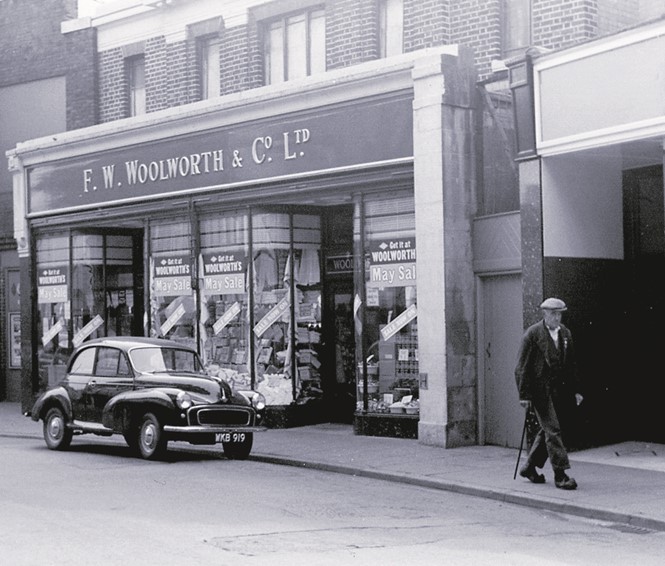Rewind: Woolworths

With a failing business model and competition from online retailers, was Woolworths a casualty of the digital age or an example of a mismanaged brand?
Lee Rolston, strategy director, jones knowles ritchie
Good old Woolies. It was an institution and an icon of the high street – where people of a certain age bought their first 7-inch single, were delighted by pick ’n‘ mix and could buy everything from an Action Man to a toilet brush. For decades it was the biggest retailer of confectionery in Britain and almost every high street had one. For kids in the ’60s, ’70s and ’80s it was the palace of treats long before Toys “R” Us.But the perils of nostalgia are that it selects what it wants and the sepia tint gives that 20/20 vision a distorted warm glow. For years before its inevitable demise, going to a Woolworths felt like an East Berlin shopping trip before the wall came down. Half-filled shelves, bins of Boyzone cassette singles, discount stickers on Xmas Selection Boxes in February, selling Sony Discmans when we all scrambled for iPods. All with the enormous millstone of a bricks and mortar property estate when a mouse, a big shed and some lorries was all you needed to sell 90% of their range. And finally the consumers voted with their feet away from the high street to out of town retail parks and specialist retailers.In short, wrong product, wrong location, wrong proposition, wrong business model and an out-dated legacy cost structure. Nearly all the fundamentals you need to have in place to build a compelling brand strategy from were missing.The wild optimist in us all would love to say that brand strategy and a reposition would’ve saved the brand. But that feels like saying that a scarf and gloves would’ve got the woolly mammoth through the ice age.
Mark Meghezzi, proposition manager – customer experience, O2
The sad demise of Woolworths is a stark reminder of what happens when you lose sight of what your customers want.While Amazon aggressively pursued its vision of becoming ‘The world’s most customer centric company,’ Woolies misplaced its efforts by focusing on expanding its product range on the high street to arrest lagging sales.When you lose sight of what your customers want – in this case it was to quickly, cheaply and conveniently buy their non-food staples – you will quickly lose your customers.It is not that Woolworths betrayed or neglected its customers, merely that it didn't understand what they wanted.
Sarah Macaulay, global marketing manager, Glenfiddich
Woolworths always evokes happy memories for me. The pick ’n‘ mix counter was often the highlight of many a long, rainy summer holiday in Scotland when my grandparents were generous in supplying cold hard cash for confections to allay boredom.Apart from these memories, I struggle to understand what the Woolworths offer was. Everything it did, from garden furniture to school stationery to birthday cards and of course the pick ’n‘ mix was done better, and smarter, by another retailer.The chain did have a strong regional presence in the UK and was probably a local high street stalwart in many a small town.It is always a shame when a familiar high street chain demises, particularly one that has a special place in childhood memories.That said, if the offer is confused and undifferentiated, there should be no place for a retail offer like that.No matter what memories it evokes, if the retailer doesn’t offer something; the best range, the best price or the best deals, then the power of pick ’n‘ mix alone won’t be able to resurrect it!
Leigh Tasker, managing director, Substance
Woolworths is a brand I remember strongly from my childhood. My overriding memory is the superb choice available – be that a toy some sweets, a book or some stationary, there was always plenty to capture my interest and imagination. However, while that may have been a great proposition in the '80s, it is clear that the brand failed to connect with the Internet-enabled generation and this quickly brought about its demise.I don’t think a rebrand would have helped a great deal - the failure was really at boardroom level in that the brand should have pioneered online. There’s no reason at all why Woolworths couldn't have been prolific in partnership with the likes of Amazon.


